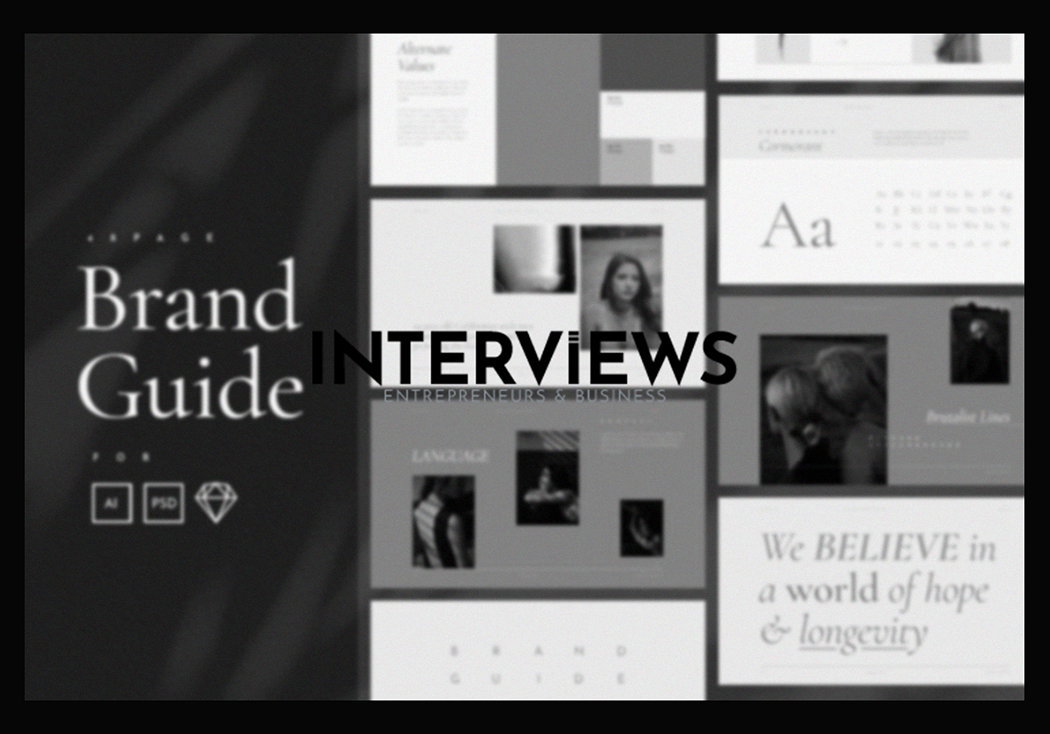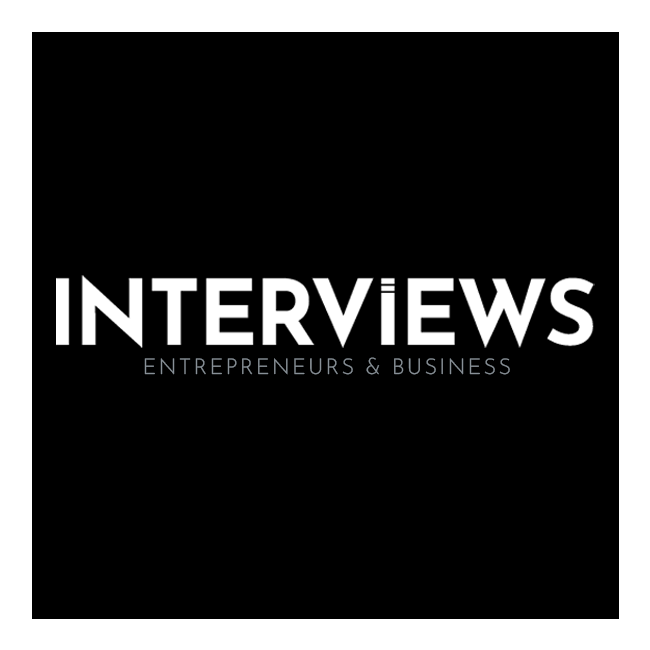Starting Your Clothing Line: From Sketchbook to Storefront
So, you have that entrepreneurial itch? You dream of launching a clothing line? Great! But hold on, future fashion mogul. Before sketching designs or spending money on fabric, let’s discuss how to turn your dream into a real business. Spoiler: it’s more than just nice clothes.
Laying the Foundation: Planning and Prep Work
This is fashion business boot camp. No one builds a skyscraper on unstable ground. The same applies to your clothing empire. A solid plan is vital.
Sharpen Your Design Skills
First, hone your design skills! Whether self-taught or with a fashion degree, constantly refining your skills is essential. Stay updated on trends, experiment with styles, and find your distinct design voice. You want clothes people want to wear, not just admire.
Craft Your Clothing Business Blueprint
A business plan isn’t just for corporate types; it’s your roadmap to success. Outline your goals, target audience, brand identity, and financials. Think of it as the GPS for your fashion journey, steering you clear of getting lost in the industry.
Trendspotting and Market Research: Become a Fashion Detective
Fashion is fickle. Yesterday’s neon can be today’s muted earth tones. You need to forecast trends, constantly reading about what’s hot (and what’s not). Dive into market research: What are people buying? What’s lacking? Knowing trends guides you in designing relevant collections.
Know Your Rivals: Scouting the Competition
You’re not entering a vacuum. Other brands want attention and customers. Research your competition. What do they do well? Where do they fail? Understanding their strengths and weaknesses helps you find your unique space. Think of it as fashion espionage for business intelligence!
Building Your Brand’s DNA: Branding Essentials
Your brand is more than a name and logo; it’s the soul of your clothing line. It connects people with you beyond fabric and stitching.
Forge a Brand That Resonates
Building a strong brand is vital. It’s the emotional bond customers have with your line. They choose you over numerous options due to this connection. Iconic brands evoke feelings, a lifestyle, an aspiration. Cultivate that brand power.
Define Your Brand’s Personality: If Your Brand Could Talk…
Is your brand edgy and rebellious? Classic and sophisticated? Fun and quirky? Establish your brand’s personality. This influences designs, marketing, and customer service. It gives your brand a voice and character that resonates with your target audience.
Craft Your Brand Positioning Statement: Elevator Pitch Perfection
This is your brand’s concise identity statement. “We offer sustainable streetwear for eco-conscious urban dwellers.” Boom! It clearly states who you are and what you offer. Practice until it’s second nature – it’s your go-to brand introduction.
Name Game Strong: Choosing the Right Business Name
Your business name is your first handshake with the world. It must be memorable, relevant to your brand, and easy to pronounce and spell. Bonus points if it’s available as a domain and social media handle. Brainstorm, seek feedback, and check for trademarks to avoid potential conflicts.
Slogan Magic: Craft a Catchy Tagline
“Just Do It.” “Think Different.” Slogans are short, punchy, and memorable. They embody your brand’s essence. Create a catchy slogan that sticks in minds and reinforces your message. It’s your brand’s mic drop in marketing.
Logo Love: Design a Professional Visual Identity
Your logo is your brand’s visual face. It should be appealing and represent your personality. Think of the Nike swoosh or the Apple apple – instantly recognizable. Invest in a good logo; it’s worth its weight in branding gold.
Visual Language: Creating a Cohesive Aesthetic
Beyond the logo, define your visual language – colors, fonts, imagery style. This creates a consistent aesthetic across all platforms, from your site to social media. This visual fingerprint makes you identifiable in the crowded fashion landscape.
From Idea to Garment: Design and Development
This is where magic occurs! Time to turn sketches and mood boards into clothing.
Design and Develop Your Clothing Line
This is the core of your clothing line. Design pieces, create tech packs, source fabrics, and develop prototypes. This stage requires tweaks and back-and-forth, ensuring your vision turns into wearable garments. It’s labor of love (with a bit of fashion science!).
Making it Real: Production and Manufacturing
Designs finalized, fabrics sourced – now you need to make clothes at quantities that sell.
Set Up Production and Manufacturing
Decide how you’ll produce your clothing line. Will you manufacture in-house, outsource locally, or go overseas? Each option has pros and cons regarding cost, quality, and lead times. Research thoroughly and choose a method aligning with your budget and values.
Opening Your Digital Doors: Online Presence
In today’s world, an online presence is crucial. Your website and social media are digital storefronts reaching customers everywhere.
E-commerce Empire: Create Your Online Store
Set up an online store to sell your clothes. Platforms like Shopify and Etsy are user-friendly, providing essential tools for managing product listings and payments. Think of your site as your 24/7 flagship store, open to all.
Social Media Savvy: Engage and Build Community
Social media is crucial for brand building. Set up accounts on platforms frequented by your audience. Engage followers, share behind-the-scenes content, run contests, and build a community. It’s about creating conversations, not just ads.
Marketing Machine: Develop Your Promotion Plan
Having a website and social media isn’t enough; craft a marketing plan to drive traffic and sales. Use social media marketing, email marketing, influencer collaborations, and paid ads to promote your brand. Marketing amplifies your brand message.
Show Me the Money (Spent): Startup Costs
Let’s discuss costs. Starting a clothing line isn’t free. Understanding expenses is key to budgeting and financial planning.
Online Clothing Line (Lean Startup Style)
- Business Plan & Branding: A solid plan and brand identity form the foundation for online ventures.
- Design & Development: Costs for design work, patterns, freelance designers, or software.
- Fabric Sourcing: Budget for fabric samples and initial orders.
- Production & Manufacturing: Significant costs can arise whether outsourcing or handling it yourself.
- E-commerce Platform: Subscription fees for platforms like Shopify or Etsy.
- Marketing & Advertising: Budget for social media ads, email marketing tools, and influencer collaborations.
- Inventory: The cost of initial clothing stock.
Large Retail Clothing Line (Brick-and-Mortar Dreams)
- Rent & Utilities: Physical store space carries rent, utilities, and maintenance costs.
- Staffing: Salaries for sales staff, customer service, and possibly in-house production.
- Inventory: A larger inventory investment to fill your store and meet demand.
- Marketing & Advertising: Comprehensive efforts needed to draw foot traffic.
- Equipment: Display fixtures, point-of-sale systems, security systems, etc.
- Legal & Insurance: Licenses, permits, and coverage are essential.
Cost-Influencing Factors: The Variables at Play
- Location: Rent and operational costs vary by location, especially for retail.
- Scale: Larger operations need more investment across the board.
- Concept: High-end fashion has different cost structures than casual wear.
- Production Method: Outsourcing can be cheaper but may affect quality control.
- Marketing Strategy: More aggressive marketing equals bigger costs.
- higher costs.
Budget Reality Check: Minimum Investment
To start a clothing brand in India, expect to budget between ₹5 lakh and ₹10 lakh. This estimation can change based on your choices. Costs may be higher or lower depending on your specific needs.
Startup Cost Breakdown: Where Does the Money Go?
- Production costs: Fabric, manufacturing, and labor.
- Business setup costs: Legal fees, licenses, permits, and branding materials.
- Marketing and advertising: Online ads, social media promotions, and content creation.
- Other costs: Website development, e-commerce fees, and office supplies.
Legally Legit: Choosing Your Business Structure – LLC (Limited Liability Company)
Legal matters are vital for protecting your business. Let’s explore LLCs.
Why an LLC is Your Business Shield
- Liability Protection: LLCs protect personal assets from business debts and lawsuits. If issues arise, your savings and home remain safe. Without an LLC, your assets are at risk.
- Professionalism and Credibility: An LLC boosts your brand’s credibility with customers. It shows commitment to your business.
- Separation of Finances: LLCs keep personal and business finances apart, making accounting easier. Clear financial tracking avoids tax issues.
- Tax Advantages: LLCs offer tax flexibility. Consult a tax professional to check benefits for you.
- Ease of Operations: LLCs simplify opening bank accounts and securing loans. This lets you focus more on fashion.
When an LLC Might Be Optional (Initially)
- Small, Low-Risk Businesses: Very small startups may start as sole proprietorships. Transition to an LLC as you grow.
- Initial Stages: You can launch without an LLC. Form one later for liability protection as you scale.
Forming Your LLC: Step-by-Step Guide
- Choose a Business Name: Select a unique name available in your state. Conduct a name search to avoid legal trouble.
- Register Your Business: Submit paperwork to your state’s Secretary of State. Each state has its own requirements and fees.
- Obtain an EIN: Get an Employer Identification Number from the IRS. This functions like a social security number for your business.
- Create an Operating Agreement: Define the rules for your LLC. While not mandated, it clarifies roles among members.
- Open a Business Bank Account: Keep personal and business finances distinct. This is vital for clarity and professionalism.
Bootstrapping Your Brand: Starting with Little to No Money
Limited budget? Creativity and resourcefulness are essential for starting on a tight budget.
Low-Cost Production Hacks
- Dropshipping: Partner with a supplier who manages inventory and shipping. Focus on marketing. It needs little upfront investment but may have lower profits.
- Print-on-Demand: Use services that create clothing upon order. Hold no inventory. It’s great for testing designs but may have higher costs per item.
- Smart Fabric Sourcing: Look for affordable fabric options, catch sales, and consider deadstock fabrics. Being resourceful is key!
Building Your Online Empire on a Budget
- Social Media Power: Use free platforms like Instagram and TikTok to promote your brand. Content is crucial!
- DIY Website: Utilize low-cost website builders or free options to create a basic shop. Focus on functionality over aesthetics at first.
- Email Marketing Essentials: Create an email list. Utilize free marketing tools to engage with your audience. Email remains powerful.
No Experience, No Problem: Starting from Scratch
Feeling unsure in fashion? Don’t let inexperience stop you. Passion and eagerness to learn are vital assets.
Develop a Solid Business Plan (Even Without Experience)
- Market Research is Your Teacher: Research thoroughly to understand your audience and competitors. Knowledge empowers you.
- Niche Down to Stand Out: Focus on a specific style or segment. This makes your brand more manageable. Don’t spread yourself too thin at the beginning.
- Brand Identity is Key: Create strong brand identity; name, logo, and aesthetic matter. It’s your first impression on customers.
- Financial Projections: Estimate startup costs, production expenses, and revenue. Even rough figures help map the financial landscape.
Design and Production Guidance for Beginners
- Design Collaboration: If design isn’t your strength, work with freelance designers or employ user-friendly online tools. Get help where needed.
- Fabric Research is Crucial: Investigate quality fabrics that match your brand and budget. The right fabric affects quality and cost.
- Production Options for Newbies: Look into print-on-demand or dropshipping or find small manufacturers willing to collaborate with startups.
Online Presence & Marketing for the Uninitiated
- Easy E-commerce Platforms: Consider user-friendly sites like Shopify or Etsy. They handle tech, allowing focus on sales.
- Social Media Learning Curve: Build your social presence gradually. Create valuable content and engage with customers consistently over time.
- Basic Marketing Strategy: Craft a simple marketing plan centered on social media and email to engage your audience effectively.
Legal and Financial Basics for Beginners
- Business Registration 101: Register your business name and choose a structure (sole proprietorship, LLC). Start legal processes early.
- Pricing Strategy Fundamentals: Set competitive yet profitable prices. Account for costs, competition, and perceived value.
- Payment Processing Setup: Ensure secure payment options for your online store. Customers must pay easily and securely.
Continuous Improvement: The Never-Ending Learning Process
- Customer Feedback Loop: Seek feedback from customers to improve offerings. They are your best teachers.
- Stay Fashion-Forward: Keep up with trends and marketing tactics in fashion’s ever-changing landscape.
- Networking is Key: Connect with fellow fashion entrepreneurs. Learn from peers and build meaningful relationships.
Legal Lowdown: Key Considerations
Apart from LLCs, other legal aspects exist for your clothing line.
Business Structure Revisited: Choosing Wisely
Select a suitable business structure (sole proprietorship, LLC). Examine legal implications closely with professional advice.
Protecting Your Creative Assets: Intellectual Property
Safeguard your brand name, logo, and original designs through trademarks and copyrights. Protecting intellectual property is vital for brand identity.
Terms and Conditions Transparency: Setting Clear Expectations
Create clear terms for your online store and sales policies. This ensures smooth transactions and safeguards you and customers alike.
Trademark Territory: Registration Rundown
Dive into trademark registration; it’s vital for brand protection.
Trademark Search: Name Check Time
Pursue a thorough trademark search before committing to a name. Ensure it’s not registered or too similar already to avoid legal issues later.
Class 25: The Fashion Trademark Zone
If applying for trademark for clothing, register under Class 25, covering clothing and apparel specifically. Correct classification is critical for protection.
Application Process: Paperwork and Patience
Selecting a trademark office requires preparation. Submit your application carefully to the appropriate intellectual property office (like the USPTO). Seek legal help if necessary for completeness.
USPTO Interactions: Responding to Official Actions
You must respond to inquiries from the trademark office promptly. Provide clarifications as needed to prevent obstacles in the application process.
Trademark Triumph: Legal Brand Protection
A trademark grants legal protection for your brand name and logo against unauthorized use. This valuable asset shields your brand identity in the marketplace.
Streetwear Scene: Launching Your Urban
Fashion Brand
Aiming for streetwear? Here’s a focused guide.
Streetwear Brand Blueprint: Identity and Audience
- Brand Story Authenticity: What’s your brand’s unique story? What values do you represent? Authenticity matters in streetwear.
- Target Audience Deep Dive: Who do you want to reach? Understand their interests and style. Streetwear thrives on community.
- Streetwear Aesthetic Definition: Define your specific streetwear style – graphic tees, oversized hoodies, or something else. Establish your niche.
Streetwear Design and Production: Making it Cool
- Unique Product Design: Create trendy, unique, and high-quality designs. Consumers value originality.
- Production Process Expertise: Choose between outsourcing or in-house production. Align methods with streetwear quality.
- Streetwear Sourcing Network: Find reliable suppliers for fabrics and materials. Prioritize quality and ethics.
Streetwear Online Presence: Digital Domination
- Website Vibe Check: Create a website that reflects your streetwear aesthetic. Ensure it is functional and user-friendly.
- Social Media Street Cred: Use Instagram, TikTok, and others for community building. Authentic engagement is key.
- E-commerce Platform for Streetwear: Set up an online store that connects with your site and social media for a smooth shopping experience.
Streetwear Marketing Tactics: Reaching the Right Crowd
- Content Marketing Coolness: Produce engaging photos, videos, and blog posts. Showcase your brand and streetwear lifestyle.
- Influencer Marketing in Streetwear: Partner with relevant influencers who resonate with your audience. Authenticity matters.
- Community Building Focus: Engage with your audience. Run contests to foster community. Streetwear often revolves around belonging.
- Limited Drops Hype: Generate excitement with exclusive product drops. Scarcity drives demand.
Fabric Fundamentals: Sourcing for Your Clothing Line
Fabric forms the basis of your clothing. Effective sourcing is vital.
Fabric Know-How: Needs and Construction
- Design-Driven Fabric Choice: Select fabrics that fit your designs and target market. Fabric choice is crucial.
- Fabric Construction Education: Learn about different fabric types, weaves, and finishes. This knowledge leads to informed choices.
- Quality Standards Definition: Set clear quality benchmarks for performance, durability, and sustainability. Good fabric ensures a quality brand.
Supplier Scouting: Finding Fabric Partners
- Online Fabric Marketplaces: Utilize online platforms for fabric sourcing. The internet offers many options.
- Industry Events Exploration: Attend trade shows to view fabrics and meet suppliers. Networking is essential.
- Mill Direct Consideration: Consider sourcing from mills, while being aware of minimum order requirements. This can cut costs for larger brands.
- Distributor and Agent Networks: Work with fabric distributors for wider access. Agents simplify sourcing.
- Local Fabric Market Advantage: Explore local markets for small quantities or unique finds. Local sourcing can provide flexibility.
Supplier Selection Criteria: Quality and Reliability
- Quality Prioritization: Select suppliers known for high-quality fabrics. Quality ensures fine garments.
- Sustainability Considerations: Favor suppliers with ethical practices. Consumers value sustainability.
- Pricing and Lead Time Negotiation: Negotiate fair prices and delivery times. These aspects are critical.
- MOQ Awareness: Know minimum order quantities and ensure alignment with production needs. MOQs affect cash flow.
- Sampling for Quality Control: Always request fabric samples. Evaluate them before making bulk orders.
- Relationship Building with Suppliers: Build strong relationships with suppliers. This ensures a reliable supply chain.
Sourcing Strategies: Diverse Approaches
- Direct Sourcing Benefits: Buy fabric directly from mills for lower costs and better control. It can be efficient.
- Agent/Distributor Sourcing Convenience: Use agents for diverse fabric choices and simplified sourcing.
- Jobber Sourcing Cautions: Jobbers can provide discounted fabric, but watch for quality issues.
- Manufacturer Recommendations: Your manufacturer might recommend trusted fabric suppliers. This streamlines sourcing.
Fabric Sourcing Plan: Strategic Approach
- Comprehensive Sourcing Plan Development: Outline needs, identify suppliers, and establish timelines. A clear plan ensures efficiency.
Fashion Forecast: What’s Trending in 2025?
Staying trendy is vital. Let’s look into fashion’s future for 2025.
Gen Z and Maximalist Mania: Bold and Unapologetic
- Wide-Leg and Relaxed Denim: Comfort continues to lead denim trends. Skinny jeans might fade away.
- Maximalism Unleashed: More is better! Bold colors, patterns, and details take center stage now.
- Chunky Accessories are Key: Big jewelry, large bags, and chunky shoes enhance maximalist outfits. Accessories play a crucial role.
- Socks with Loafers & Ballet Flats: This trend remains popular. Socks are now a defined style choice.
- Mini Skirts Making a Comeback: Hemlines rise again. Mini skirts are trendy once more.
- Athleisure Infusion: Sporty elements mix into daily fashion. Style and comfort blend seamlessly.
Sustainability and Innovation: Eco-Conscious Style
- Circular Footwear Design: Focus on eco-friendly materials that emphasize recyclability. Sustainable footwear gains popularity.
- Sheer and Lightweight Fabrics: Lightweight fabrics reflect desires for layering and breathability in style.
Other Trend Tidbits: Eclectic and Emerging Styles
- Boho Chic Suede: Suede adds bohemian flair to designs. Boho vibes are resurging.
- Yellow Hues: Bright yellow shades gain traction now. This color shines in fashion.
- Hot Pants Return: Short shorts make a statement again. Get ready for hot pants’ comeback.
- Aquatic Influences: Ocean colors, textures, and designs emerge in styles this season.
- Feminine Polo Shirt Reimagined: Polo shirts get stylish updates for women now.
- Animal Print Wildcard: Animal prints remain versatile in fashion’s realm.
- Thong Sandals Rise Again: Minimalist thong sandals will return to fashion this year.
- Strapless Dress Revival: Strapless designs trend once more. Their popularity is growing again.
- Asymmetry Edge: Asymmetrical designs introduce a modern twist. Asymmetry gets noticed now.
- Oasiscore Aesthetic: Vacation-inspired styles gain traction in the fashion landscape.
- Southern Gothic Summer Style: Dark romantic styles emerge for summer fashion this year.
- Aimless Shopping Trend: The focus shifts to browsing over buying in shopping experiences now.
- Phone Charms and Wristlets: Phone accessories with charms become trendy style elements.





